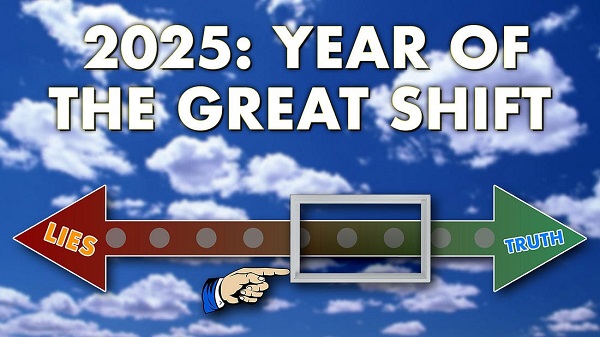By Jim Warren
Follow those who seek the truth. Run from the man who says he’s found it.
-Václav Havel, first president of Czechoslovakia after the 1989 Velvet Revolution.
In addition to its threat to the right of free expression, Bill C-59, stands as a threat to the free spirit of inquiry that sustains modern science. Many of the efforts undertaken today to reduce the environmental footprint of the gas and petroleum industries are based on scientific research conducted by professionals whose efforts are guided by a set of well-established philosophical and methodological principles. The efforts of climate change scientists who attempt to more accurately assess the causes, pace and intensity of anthropogenic global warming operate under similar guidelines.
Science regulates adherence to its philosophical and methodological standards through a system whereby research methods and the findings of research are published and reviewed by panels of experienced practitioners in its various disciplines – the famous scientific peer review process. In this way the quality of findings can be assessed. Findings that are based on flawed methodology can be outright rejected or researchers can be asked to adjust their methods and try again. Even if a statistical study or experiment has made it through peer review once, ongoing efforts are made to check the work against new information and experiments are subjected to replication efforts.
Rejections of flawed research can happen quickly, but, unfortunately, can sometimes take years. For example, it took the leading medical journal, The Lancet, 12 years to debunk a fraudulent 1998 study it had published linking vaccinations for measles, mumps and rubella (MMR) to colitis which was in turn linked to autism.
Bill C-59 proposes to establish a government appointed agency with the capacity to launch prosecutions which will presumably be adjudicated by a quasi-judicial panel or tribunal with the ability to impose jaw-dropping penalties in the millions. The tribunal will assess claims made by conventional energy companies about improvements regarding things such as emissions levels. Judgments will similarly be made regarding the claims of journalists and individuals who publish the claims of those companies. This is a process that will lead to dividing the findings of science into a government approved body of work and heretical unapproved science.
The Soviet Union adopted the practice of recognizing only politically-correct government-approved science. One of the many reasons Soviet agriculture was so backward was because the approved method for improving crop genetics to develop varieties with greater tolerance to drought and early frosts was based on the “Party-approved” theory, Lamarckism. This was the idea that a trait that developed due to use or disuse during an organism’s lifetime could be transmitted to its offspring. If you grew a plant during a drought, its offspring would be drought tolerant.
Prosecutions under the Bill C-59 legislation will place a reverse onus condition on the accused. Those charged will not be presumed innocent until proven guilty. They will be required to prove what they said was true.
Willy Pickton and Paul Bernardo obtained the benefit of a right not available under Bill C-59. Those two outstanding citizens were presumed innocent until being proven guilty beyond a reasonable doubt. What comes next, reviving the evidentiary tests used in medieval witchcraft trials?
There is a mismatch between the philosophy of science and a quasi-judicial process that demands true or false certainty for scientific claims. The philosopher Karl Popper famously argued that the findings of scientific investigation can never be assumed to represent some sort of absolute immutable truth, in part because we can never know the future with absolute certainty. We are blind to whether new, not yet imagined, developments will arise in the future that falsify a scientific claim made today. According to Popper, researchers can refute or falsify a pre-existing claim but cannot claim that a new finding is absolutely true now and forever.
New research results always have a conditional status. Even after they have survived one or more tests and efforts to replicate their experimental results, they remain valid only until such a time as the next attempt proves them incorrect. This is why one of the principal tasks of good science is to critically assess the theories and findings of what is sometimes erroneously referred to as “decided science.” We often hear the claim that some science is so widely accepted it can be considered decided. The claim is false though it is made by people who should know better like the celebrity scientist Neil deGrasse Tyson. He claims the science on climate change is decided science.
Claiming that many or most scientists believe in the science around climate change does not make it correct. First of all which parts of climate science do they believe? It is a large and complex field with many streams of investigation. Furthermore, that huge body of work itself includes numerous contradictory research findings.
Publication and peer review are the principal means that allow scientific knowledge to change and hopefully improve over time. That is why the testing of theories and research findings is an ongoing, potentially never-ending scientific process. Why not allow the process to unfold as usual rather than giving the government the authority to own the unvarnished scientific “truth?”
Einstein shared many of Popper’s views. And he also had a few things to say about so-called “decided science.” The Nazis were always uncomfortable with the fact that although Einstein was German-born he was also a Jew. They were embarrassed that Einstein’s scientific achievements were overshadowing the work of “Aryan” scientists. In 1931, a group of scientists sympathetic to the Nazis published the book, 100 Authors against Einstein. Einstein was not impressed with the fact they had found so many critics. He had several criticisms of the book including his assertion that science is not done by taking a poll.
Clearly it would not be possible to state you can prove your scientific claim is true as a defense in climate court and remain consistent with Popper and his fundamental principles of science. All you can do is show that you followed a suitable methodology and logically assessed the evidence you found. But what assurance do we have the Trudeau court of science will be satisfied with this sort of assertion. A lot will hang on who the Liberals appoint to the bench.
Another reason reviewing the work of other researchers is considered critical to the scientific process is because even when studies and experiments are conducted with the utmost integrity they can generate erroneous findings. People are fallible, a decimal point winds up in the wrong place; lab equipment fails, and so on. And, unfortunately, as is the case in many fields of human endeavor, there are fraudsters and incompetents working in science. Nonetheless, while it may be imperfect in many ways, the process of scientific inquiry is the best system we have yet devised for coming as close to approximating objective truth as is possible.
In these enlightened days, when honest errors are made, we expect them to be corrected. For the past two centuries the task of reviewing and correcting scientific errors has been done by the scientific community. There are exceptions. There are authoritarian states like the former Soviet Union that have “official science” and “illegal science.” It goes back to Galileo and the Inquisition.
Under the peer review process developed by scientists, lab-coated lynch mobs are not dispatched to hang, draw and quarter scrupulous scientists whose results are rejected. Lying and cheating are another matter entirely and sanctions are imposed on those caught doing it. That is why even Dr. Fauci is said to be looking over his shoulder these days.
It hardly serves the public good to stifle the spirit of free scientific inquiry. If scientists become worried that conducting an experiment and publishing the findings could result in large fines and possible imprisonment if their results are subsequently falsified, science as we know it would cease. Conceivably, every physicist prior to Einstein had imperfect ideas about light and gravity. They weren’t rounded up and fined or imprisoned after Einstein came up with specific and general relativity. If any of Einstein’s scientific work is one day found wanting, the Nobel Prize committee won’t ask for the return of his prize.
We might reasonably expect a similar reaction from publishers and journalists who currently inform the public about developments in science. If they can be punished because the scientific developments they report are later claimed to be in error or have simply been improved upon, they are apt to quit telling the public about new science. Why assume the risk? This would no doubt be a particularly worrisome possibility if the new science involved innovations in petroleum production that are found to reduce emissions.
There is no single “accepted,” version of our climate future claimed by the Intergovernmental Panel on Climate Change (IPCC) – only a pile of speculations and probabilities based on hopefully accurate climate models and many assumptions about social and economic conditions in the future. And, as mentioned previously, claiming anything is “decided science” is ridiculous – science by definition is never fully decided, it is an ongoing process that does not presume to arrive at final absolute truths.
What if one of the predictions about the pace of climate change and its impacts made by the IPCC, or journalists from the alarmist camp is proven incorrect, shouldn’t the same rules apply? Should they not be subject to prosecution by the science inquisition? That’s not likely going to happen. It appears the intention of the Trudeau-Angus rules is that the only science subject to punishment will be the science that produces results they don’t like.
Who decides?
It is unclear exactly who will be passing judgment in the Trudeau court of science. Will Charlie Angus be appointed to the bench? Will experts in the philosophy and methodology of science be appointed to the review tribunal?
Or will the principles of Diversity, Equity and Inclusion guide appointments? Sure, that will fix everything. Science could be adjudicated by a PhD in gender studies who claims science was designed by the patriarchy, and therefore oppresses women and should be replaced by science as understood by oppressed identity groups. Justin will love it.
Let’s hope the Trudeau science court will include some people with legal backgrounds who believe in due process under the law. Maybe they could come up with a workaround for the reverse onus rules under Bill C-59.
Some of us find it quite difficult to be optimistic about a science court. There is concern that in the woke and virtuous world inhabited by Justin Trudeau and Steven Guilbeault the “truth” about the science of climate change has been decided and can be found on the CBC and Greenpeace websites. Those who beg to differ can tell it to the judge.
Related























